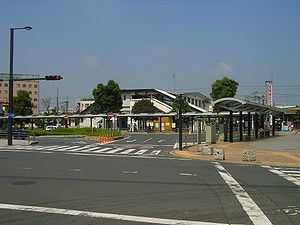- Tree flowering dogwood Phone number 048-768-3111 Population 62,284 (Feb 2016) | Region Kantō Area 27.28 km² Local time Saturday 8:39 AM | |
 | ||
Weather 9°C, Wind W at 14 km/h, 61% Humidity Points of interest Saijonuma Park, Negayado Park, Doyama Park, Kurohama Park, Nakamichi Park | ||
Hasuda (蓮田市, Hasuda-shi) is a city located in Saitama Prefecture, in the central Kantō region of Japan. As of 1 February 2016, the city had an estimated population of 62,284 and a population density of 2280 persons per km². Its total area was 27.28 square kilometres (10.53 sq mi).
Contents
- Map of Hasuda Saitama Prefecture Japan
- Geography
- Surrounding municipalities
- History
- Economy
- Railway
- Highway
- Local attractions
- References
Map of Hasuda, Saitama Prefecture, Japan
Geography
Located in eastern Saitama Prefecture, Hasuda is directly north of the prefectural capital of Saitama City.
Surrounding municipalities
History
The area of modern Hasuda has been settled since the prehistoric period, and there are numerous archaeological sites, including shell middens and burial mounds within the city limits. In addition, traces of samurai residences and castles from the Sengoku period remain. Much of what is now Hasuda was part of Iwatsuki Domain under the Edo period Tokugawa shogunate. After the Meiji restoration, the village of Ayase was created within Minamisaitama District with the establishment of the municipalities system on April 1, 1889. It was raised to town status on October 1, 1934 and renamed Hasuda. Hasuda annexed the neighboring villages of Kurohama and Hirano on May 3, 1954 and was elevated to city status on October 1, 1972.
On March 31, 2010, Hasuda was to be merged with the neighboring town of Shiraoka (from Minamisaitama District). However, the merger was canceled shortly after Shiraoka managed to grow its population to 50,000 people, qualifying it as a city.
Economy
Due to this location, Hasuda is primarily a bedroom community with over half of its population commuting to neighboring Saitama City or to the Tokyo metropolis for work. However, much of the city remains agricultural.
